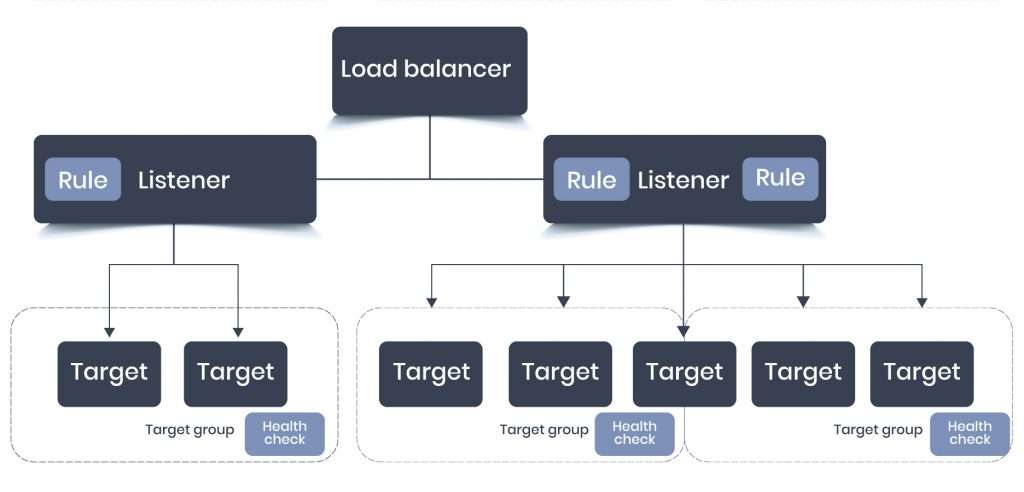
- Introduction to Amazon Lightsail
- Key Features of Amazon Lightsail
- How Amazon Lightsail Works
- Benefits of Using Amazon Lightsail
- Amazon Lightsail vs. Traditional Cloud Hosting
- Use Cases of Amazon Lightsail
- Setting Up an Instance on Amazon Lightsail
- Pricing and Cost Considerations
- Lightsail Networking and Load Balancing
- Security and Performance Optimization
- Backup and Disaster Recovery Strategies
- Migration from Lightsail to EC2
- Conclusion
Introduction to Amazon Lightsail
Amazon Lightsail is a streamlined cloud computing service provided by AWS, which is suitable for users who require a simple and affordable hosting solution. In one package, it offers virtual private servers (VPS), storage, databases, networking, and other core cloud services. Lightsail is an excellent option for small businesses, developers, and startups that require an easy application deployment method without the hassle of conventional Amazon Web Services Training . With an easy-to-use interface and consistent pricing, amazon lightsail brings cloud hosting within reach of even the most technically unsophisticated individuals.
Excited to Obtaining Your AWS Certificate? View The AWS Course Offered By ACTE Right Now!
Key Features of Amazon Lightsail
- Pre-configured Instances: Lightsail offers pre-configured instances with widely used operating systems and applications such as WordPress, Magento, and Joomla.
- Predictable Pricing: Monthly fixed plans guarantee cost control without surprise bills.
- Built-in Networking: Comprises static IPs, DNS management, and load balancers for easy network configuration.
- Automated Backups: Enables snapshots for quick recovery and data protection.
- Integrated Databases: Provides managed MySQL and PostgreSQL databases to remove administrative complexity.
- Scalability Options: The users can scale from Light sail to AWS EC2 for enhanced features.
How Amazon Lightsail Works
Amazon Lightsail is a VPS (Virtual Private Server) service that lets customers easily spin up pre-configured instances. Customers can select their favorite operating system, set up networking options, and deploy applications effortlessly. The service streamlines infrastructure management by packaging computing power, SSD-based storage, and networking into one predictable plan. Lightsail also offers an easy-to-use console and API, allowing developers to automate deployment and manage resources easily.
Benefits of Using Amazon Lightsail
- Ease of Use: A simple interface and one-click deployment make hosting effortless.
- Cost-Effective: Affordable pricing plans starting at just a few dollars per month.
- Reliable Performance: Backed by Aws Web Services infrastructure with high uptime and security.
- Flexible Deployment: Supports various applications, from websites to development environments.

- Seamless Integration: Connects easily with other AWS services for extended functionality.
- Beginner-Friendly: Ideal for individuals and small businesses new to cloud hosting.
- Website Hosting: Deploy WordPress, Joomla, or custom websites effortlessly.
- E-commerce Platforms: Host online stores with scalable VPS solutions.
- Development Environments: Set up development and testing environments quickly.
- Database Hosting: Run managed MySQL or PostgreSQL databases.
- VPN and Proxy Servers: Configure secure private networking solutions.
- Game Servers: Host multiplayer gaming environments on stable VPS instances.
- Fixed Monthly Plans: Pricing for bare instances starts at $3.50 monthly.
- Pay-as-You-Go: Users only pay for what they use, with no hidden fees.
- Free Tier Availability: New AWS security certification users can enjoy up to 750 hours of free Amazon Lightsail usage.
- Additional Charges: Costs may apply for extra storage, snapshots, and data transfer.
- Upgrade Options: Seamless migration to AWS EC2 for users needing more resources.
- Static IPs: Assign and manage IP addresses for consistent server accessibility.
- DNS Management: Use Amazon Route 53 to configure domain name resolution.
- Load Balancers: Distribute traffic evenly across multiple instances for better performance.
- Firewall Rules: Configure inbound and outbound security rules for controlled access.
- Private Networking: Create isolated networks between AWS instances using the AWS Console for secure communication.
Interested in Obtaining Your AWS Certificate? View The AWS Online Course Offered By ACTE Right Now!
Amazon Lightsail vs. Traditional Cloud Hosting
Traditional cloud hosting solutions like AWS EC2, Google Cloud, and Azure provide extensive flexibility but require a deeper understanding of cloud management. In contrast, Amazon Lightsail is designed for simplicity, offering a pre-packaged solution with predictable pricing. While EC2 allows for custom configurations, Lightsail comes with predefined instance sizes and fewer configuration options, making it easier to manage. This makes Lightsail an excellent choice for developers and businesses that need an efficient hosting solution without managing complex infrastructure. However, companies with advanced scaling needs may eventually migrate from Lightsail to EC2 for greater control and customization.
To start with AWS training
, users must create an AWS account and access the Lightsail dashboard. From there, they can launch an instance by selecting an operating system or pre-configured application. Next, users define instance specifications, configure networking and security settings, and assign a static IP if needed. Once the instance is deployed, users can connect via SSH or use the browser-based terminal for management. Lightsail also offers easy snapshot capabilities for data backup and recovery. Are You Considering Pursuing a AWS Master’s Degree? Enroll For AWS Masters Course Today! Amazon Lightsail provides security with built-in firewalls, DDoS protection, and encrypted connections. Security can be further strengthened by allowing multi-factor authentication (MFA) and limiting access through security groups. Load balancers and auto-scaling can enhance availability and response time to optimize performance. Regular backups through snapshots also assist in disaster recovery and data integrity.
Preparing for a AWS Job Interview? Check Out Our Blog on AWS Interview Questions & Answer Amazon Lightsail offers native backup and disaster recovery tools. Users can schedule regular snapshots of their instances and restore them as necessary. Automated backups should be scheduled to avoid data loss. Storing important backups in Amazon S3
provides long-term protection. A multi-region backup approach improves disaster recovery, providing minimal downtime in the event of failure.
Amazon Lightsail offers a seamless migration path to AWS EC2 for businesses requiring advanced customization. Users can take a snapshot of their Lightsail instance and import it into EC2, where they can access more robust configurations. This migration process enables businesses to scale applications while retaining the simplicity of Lightsail’s initial setup. Amazon Lightsail is a robust but easy-to-use cloud hosting service that serves businesses, developers, and entrepreneurs seeking affordable and easy-to-use VPS hosting. With its fixed pricing, seamless integrations, and pre-configured environments, Lightsail offers a solid gateway to the AWS universe. AWS training
provides robust performance and scaling without the trouble of traditional cloud hosting providers for hosting a site, running a development server, or using databases. Lightsail enables hassle-free migration to AWS EC2 for users looking to grow, making it a flexible and future-proof choice for cloud computing needs.
Use Cases of Amazon Lightsail
Setting Up an Instance on Amazon Lightsail
Pricing and Cost Considerations
Lightsail Networking and Load Balancing

Security and Performance Optimization
Backup and Disaster Recovery Strategies
Migration from Lightsail to EC2
Conclusion





